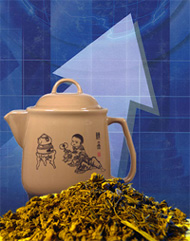One of the solutions is to market TCM drugs as herbal remedies. However, herbal remedies have been pigeonholed as food and dietary supplements.
Looking for more insights?
Sign up to stay informed about our latest article releases.
Traditional Chinese Medicine (TCM) has now expanded in a bold new direction – using botanical drugs that mimic Western drugs because they have verifiable and measurable effects, but behave like Chinese drugs, because they combine several active ingredients into their therapies. Meanwhile, in China, the ancient home of herbal medicine and a country where some 600 time-honored therapeutic herbs are widely used, TCM is undergoing a transformation of its own. What challenges will these changes represent for the pharmaceutical industry and TCM makers in China? China Knowledge at Wharton explores this topic with industry experts.

One of the solutions is to market TCM drugs as herbal remedies. However, herbal remedies have been pigeonholed as food and dietary supplements.
Sign up to stay informed about our latest article releases.